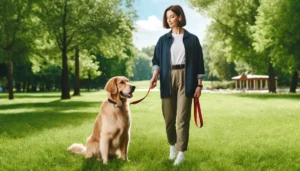For a dog and its owner to get along well, the dog must be properly trained. The process can be satisfying, but some common mistakes can ruin the process, leading to behavioral problems and anger on both sides. Understanding these mistakes can make your training more effective and improve your relationship with your pet.
Table of Contents
Toggle1. Meaningless commands
When teaching a dog, consistency is key. If you use different words for the same command, your dog may become confused and have difficulty following your instructions. Choose a clear command for each action, such as ‘come’, ‘stay’ or ‘sit’, and use that command consistently. To avoid confusing your dog, make sure everyone in the house uses the same words. This consistency makes it easier for your dog to learn what you want him to do.
2. Forget about using positive reinforcement
Pet owners tend to focus on punishing bad behavior rather than praising good behavior. But one of the best ways to train your dog is to use positive feedback. This is because when dogs are well-behaved, they are more likely to follow instructions, whether that is a treat, praise, or play. To effectively reinforce good behavior, notice and treat your dog as soon as he does something you want him to do.
3. Not paying attention to early socialization
To socialize your dog, you need to expose him to different people, animals, places, and sounds, especially in the first few weeks of his life when he is still developing. This contact helps prevent people from feeling afraid or angry and increases their self-confidence. If you don’t train your dog correctly, he may become anxious or aggressive in new places. Start socializing your dog early and continue doing so for as long as he lives so that he can handle new things with ease.
4. Exercise takes too long
Dogs, especially puppies, can only concentrate for a short time before they get bored or something else happens. Too long workouts will not yield much and can even work against you. The more frequent short training sessions the better, as they keep your dog interested and excited about learning. Instead of trying to do one big workout, try doing a few 5- to 10-minute sessions throughout the day.
5. Excessive force
Some harsh methods, such as yelling, hitting, or severe punishment, can do more harm than good. If you use these methods on your dog, he may become fearful and anxious and lose confidence in you. Training should not be based on fear and submission, but on how to lead and talk to people. To build a trusting and loving bond with your dog, train him in a friendly and positive way.
6. Start exercising too late
Dogs can learn new things at any age, but they learn best when they start teaching early. As puppies, they are naturally more flexible and learn faster. Training from a young age not only makes learning easier but also prevents bad habits from developing. If you start simple behavior training early, your dog can be well-behaved into adulthood.
7. Lack of Patience
When raising a dog you have to be very patient. Every dog is different and learns at a different pace. Expecting immediate results can leave both you and your dog frustrated. Accept the process, enjoy the small steps forward, and know that failure is a normal part of learning. Long-term success will come from patience and regular practice.
8. Can’t deal with distractions
First, the training should take place in a controlled, quiet space without distractions. As your dog gets better at doing what you say, slowly change the environment to make it more difficult. This is a great way to teach your dog to pay attention and listen to you, even when something else is going on. This is important for their behavior at home and in public.
Conclusion
By avoiding these common training mistakes, you can improve your training and help your dog become a well-adjusted, obedient, and happy friend. Remember that training is an ongoing process that requires kindness, understanding, and consistency. As a result of your hard work, you will develop a strong and lasting bond with your hat.
FAQs
1. How old does a dog need to be to start training?
The best time to start training is as soon as you bring your dog home. In dogs, this can happen as early as 8 weeks of age. Training them early will not only shape their behavior and attitude but also prevent them from developing bad habits. However, it is never too late to teach your dog as dogs of all ages can learn new things.
2. How long should exercise last?
Especially for puppies, training sessions should be short but frequent. A good rule of thumb is to exercise for five to ten minutes two to three times a day. This keeps the session interesting so your dog doesn’t get bored or stressed.
3. Are snacks necessary during training?
Some dogs need treats to learn, but most dogs respond well to treats during training. Treats are a great way to use positive reinforcement to thank your dog for good behavior. You can also use praise, petting time, or play as a reward. It’s important to find out what makes your dog tick best.
4. If I want to train my dog, should I do it myself or hire a professional?
There are many simple commands that dog owners can teach their dogs themselves. To learn how to train your dog, you can use books, online courses, courses, etc. But if your dog has specific behavioral problems or needs more advanced training, it is best to get help from a trained dog trainer.
5. What should I do if training doesn’t work for my dog?
If your dog doesn’t want to learn, consider whether the lesson is too long or too distracting. Make sure your instructions and rewards are always the same. If the problem persists, it is best to speak to an experienced dog trainer or behaviorist to find out if there is a deeper problem that is causing your dog to have difficulty learning.
6. What can I do to make sure my teaching with my dog lasts?
To make sure your training sticks, you need to be consistent. Keep practicing the things you teach your dog, and don’t be afraid to go back to basics if he messes up. To help your dog remember what you teach him, you need to use reinforcement every day.


